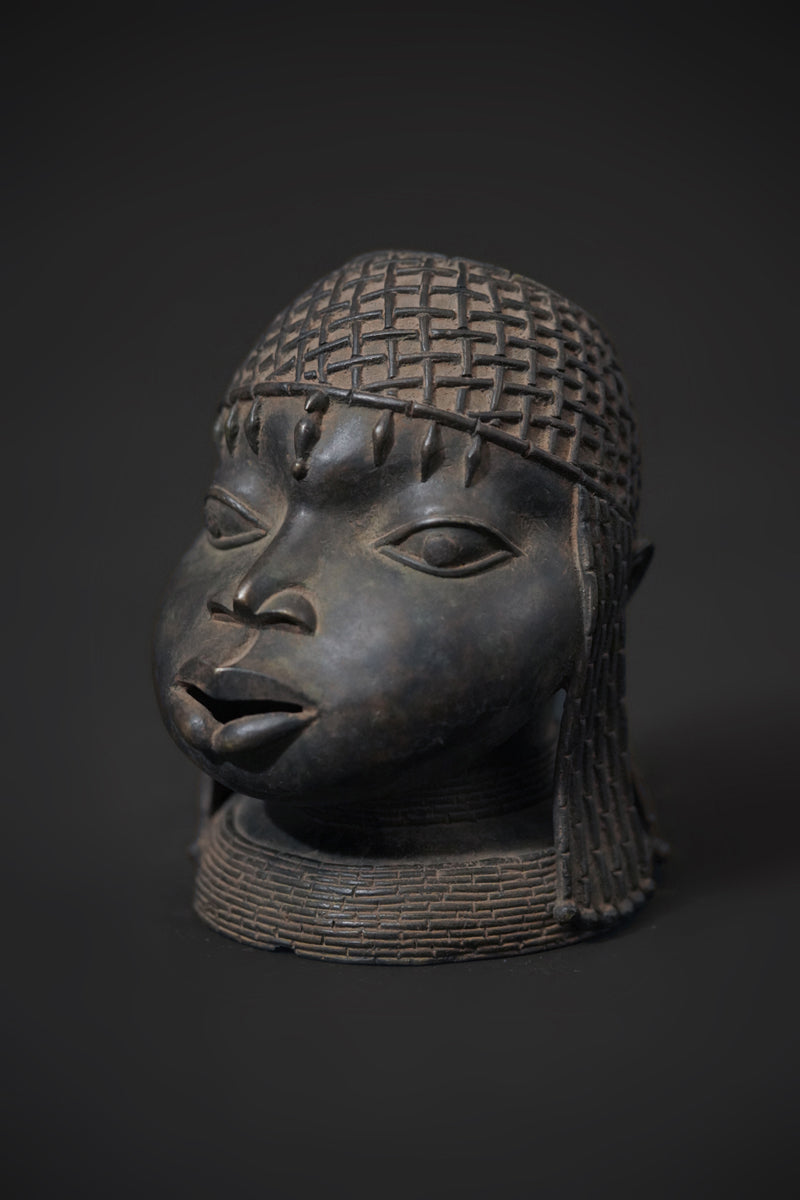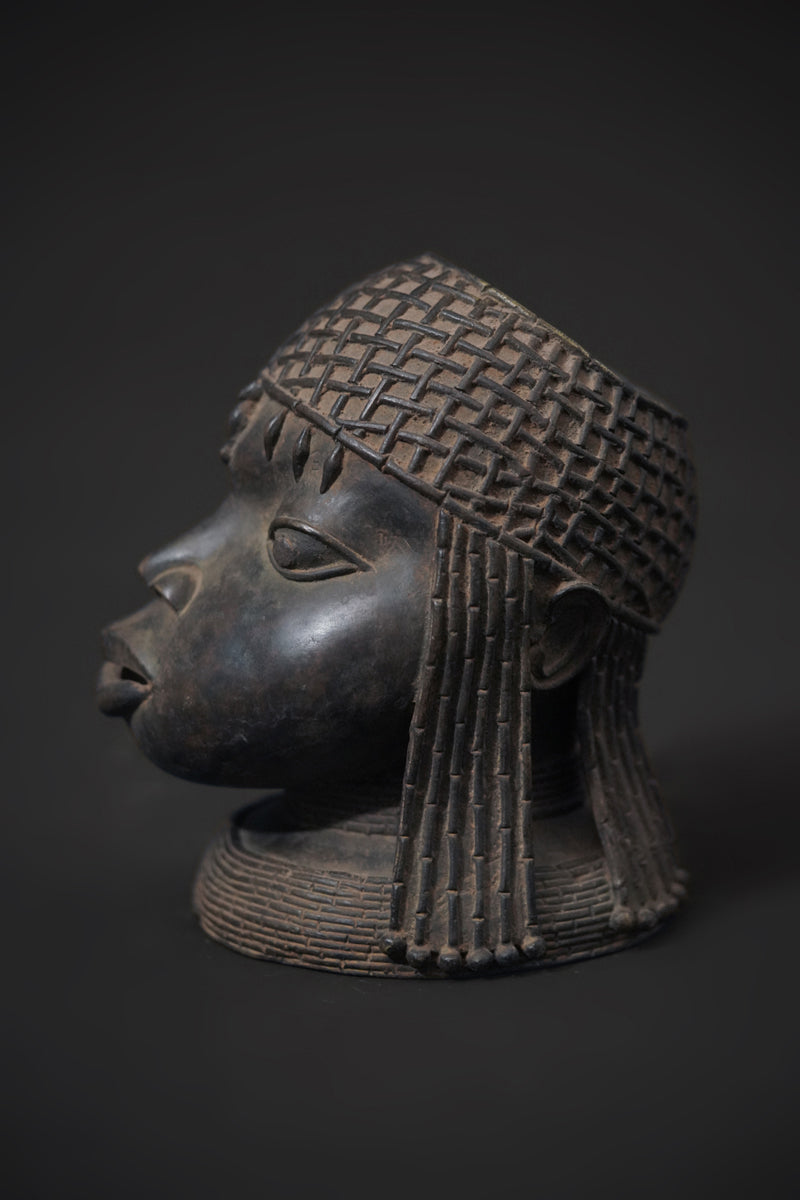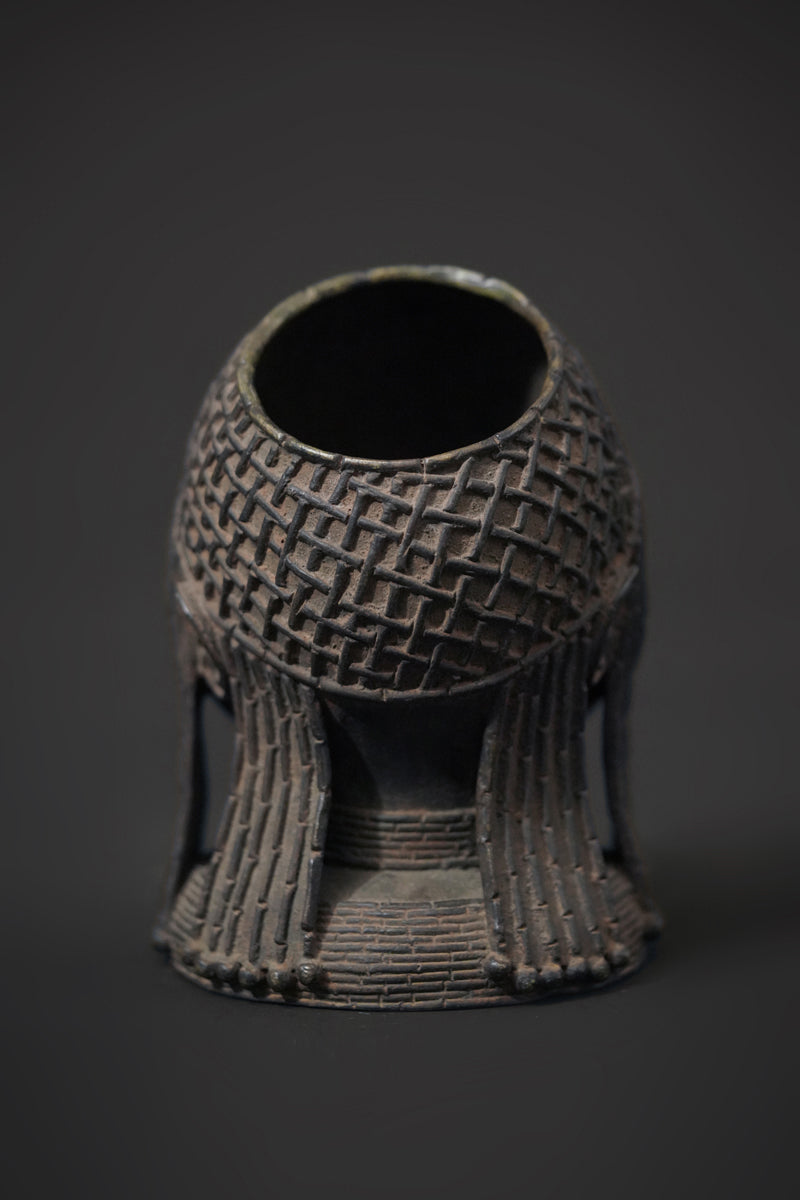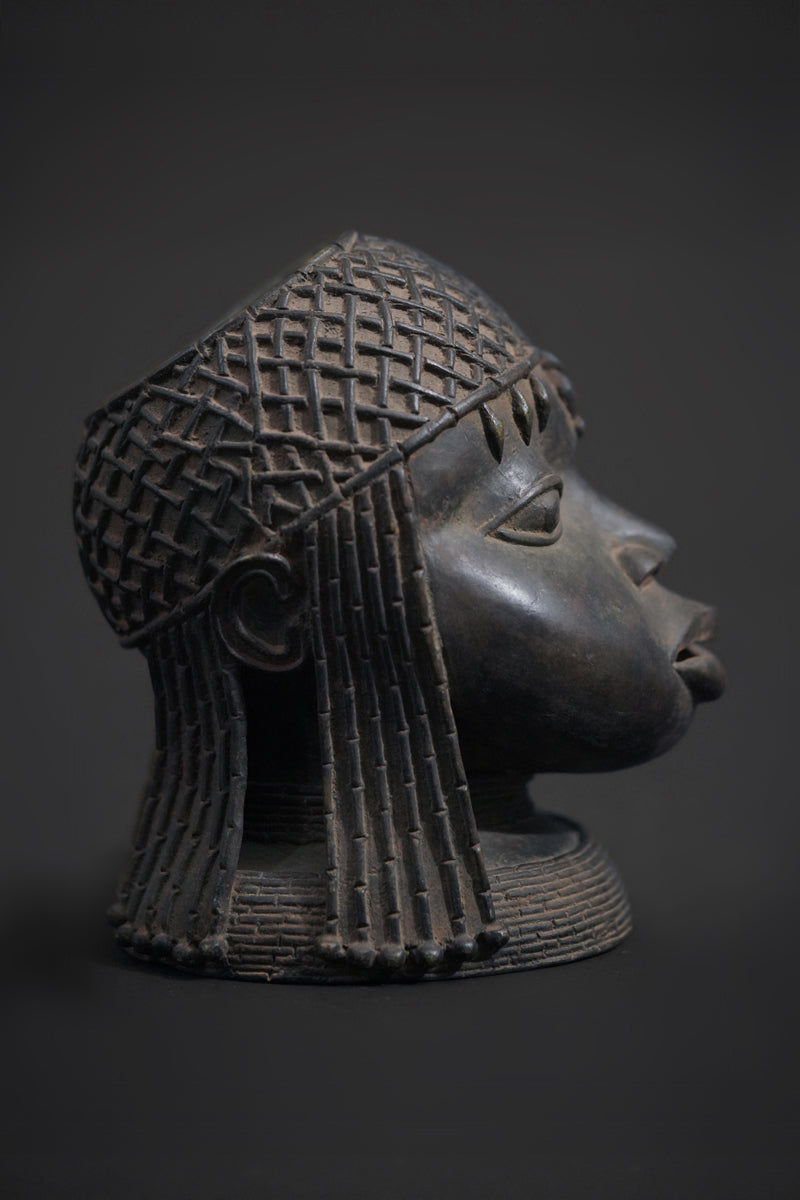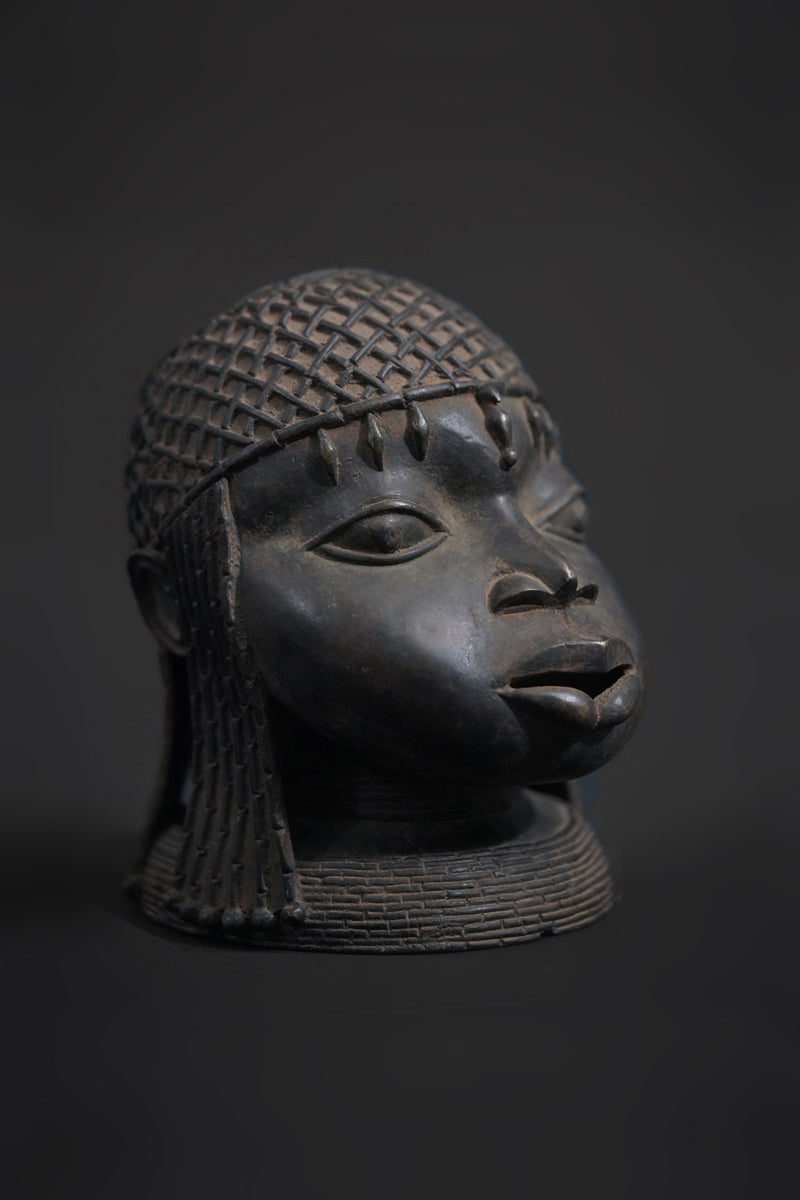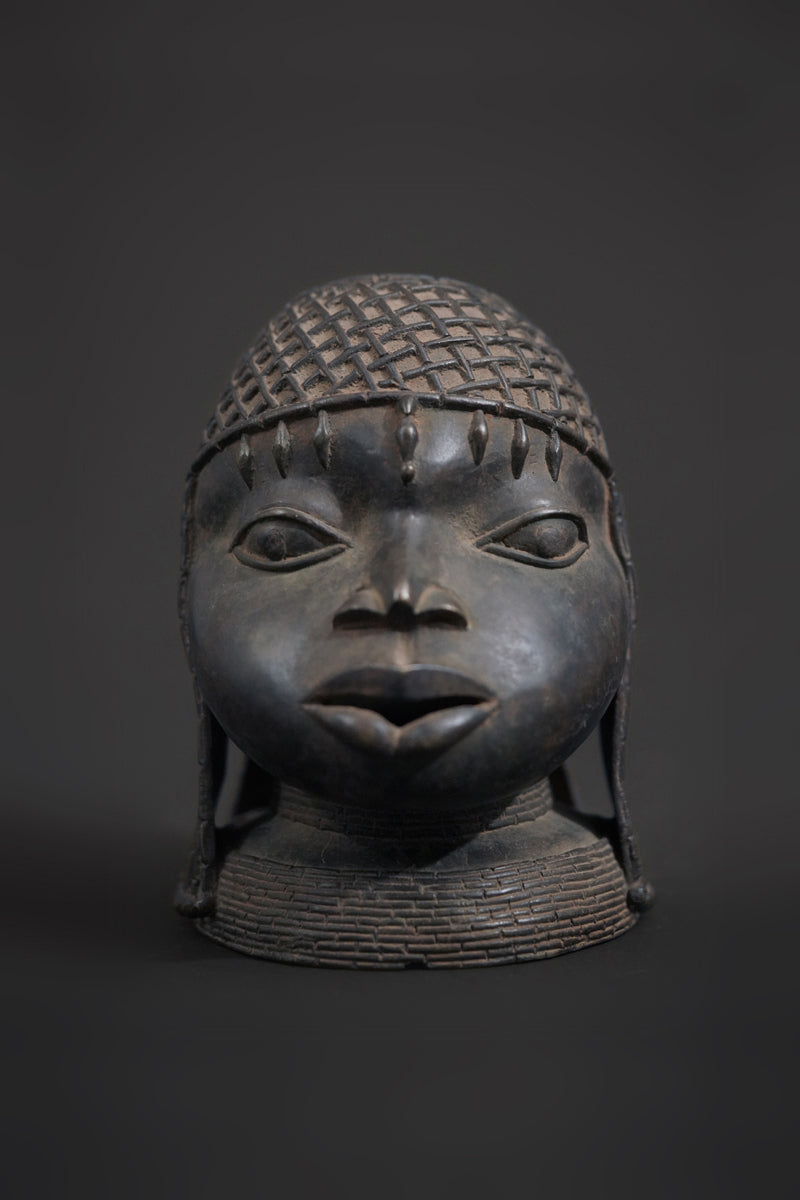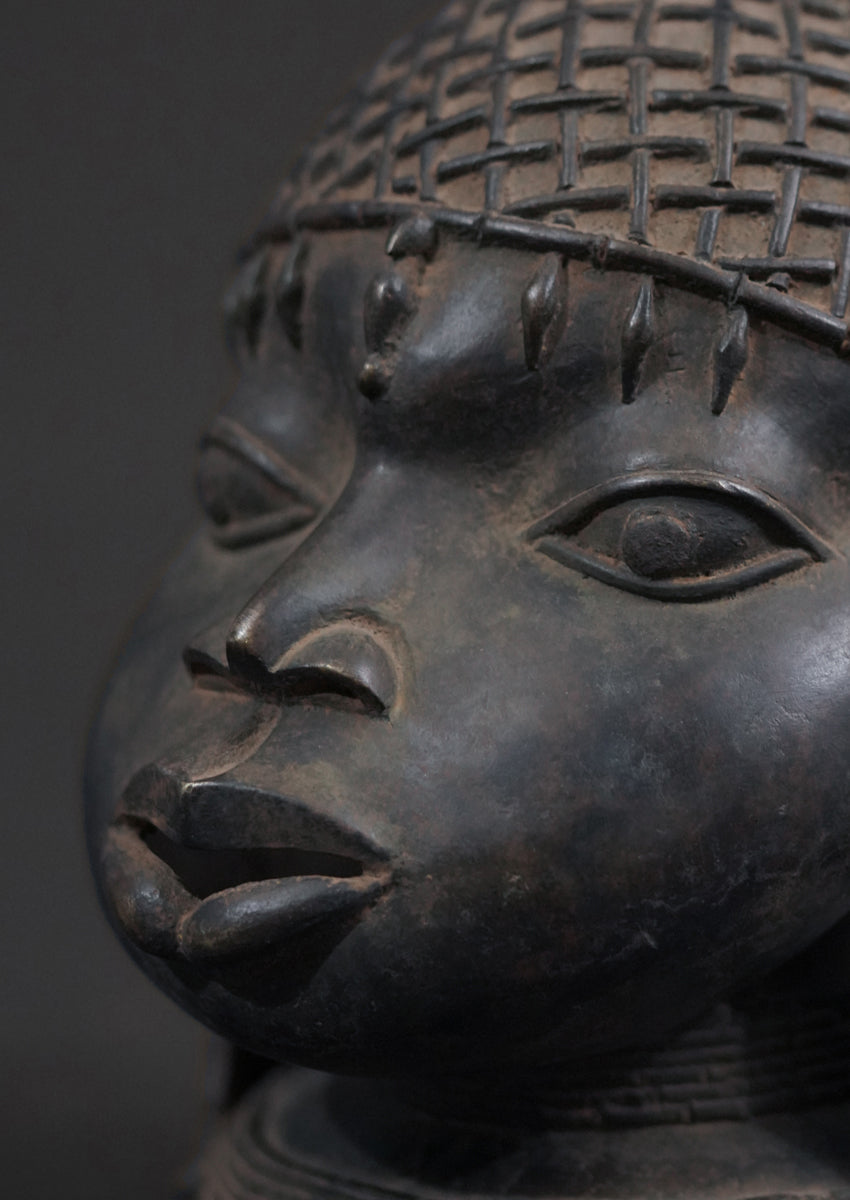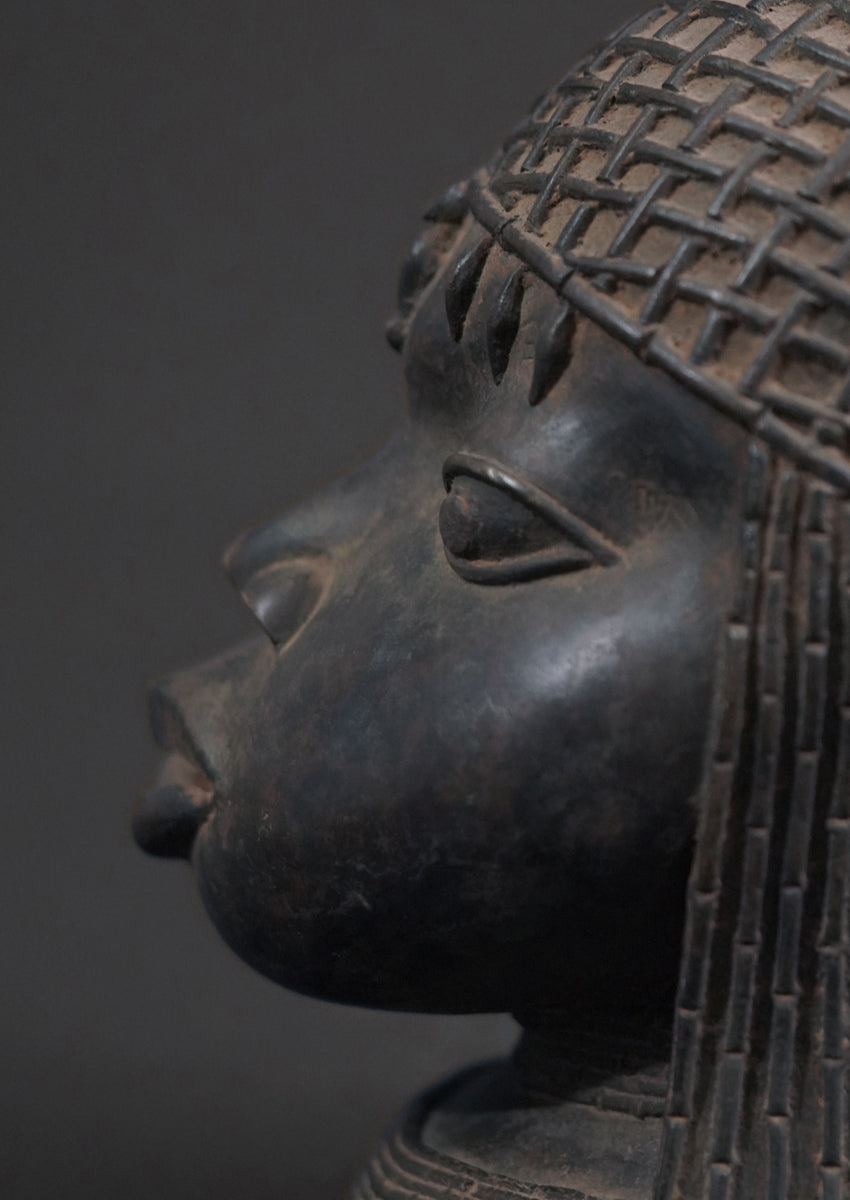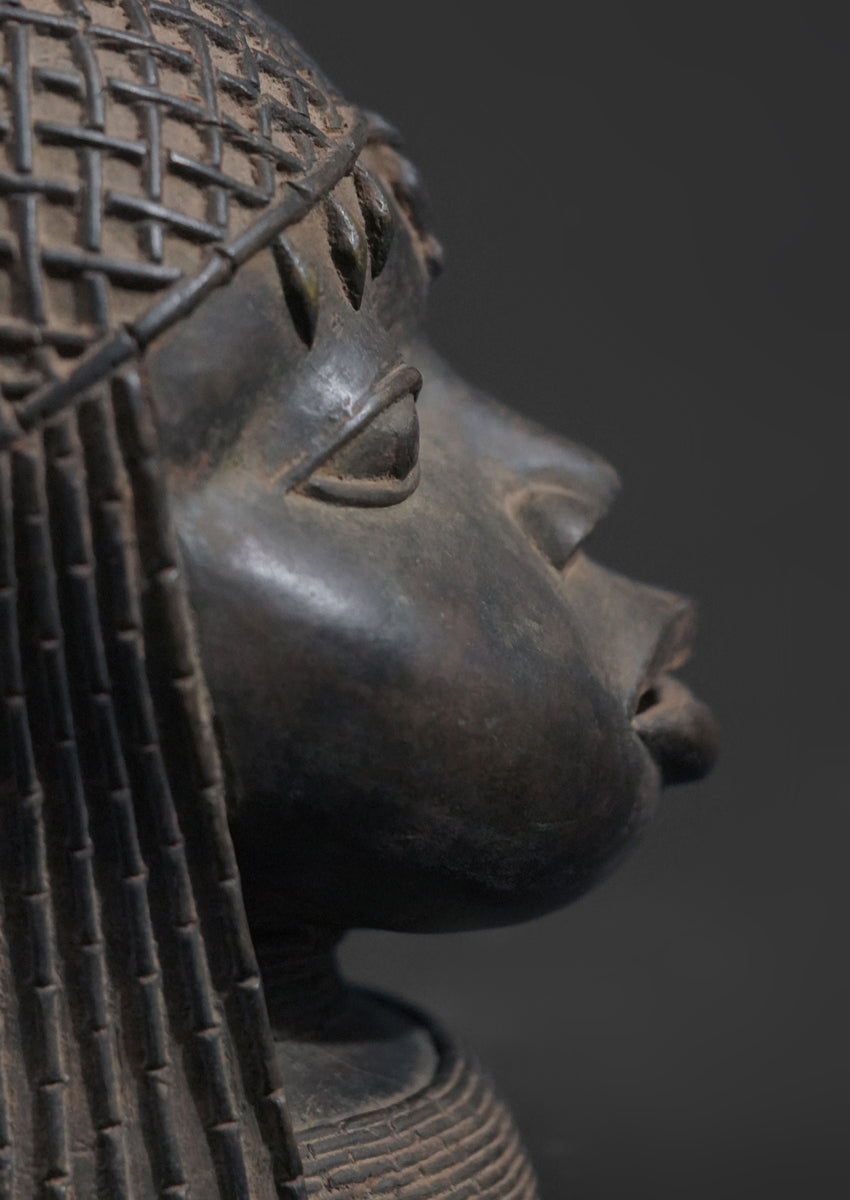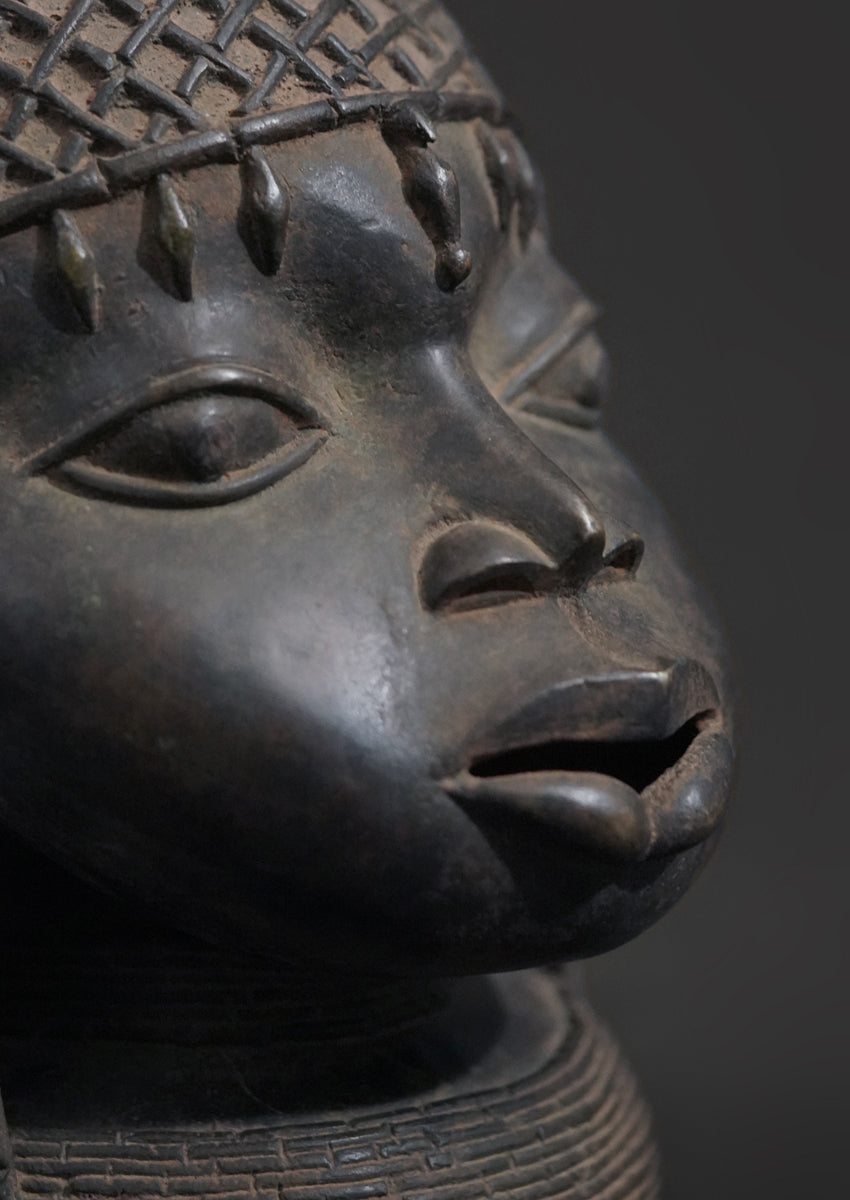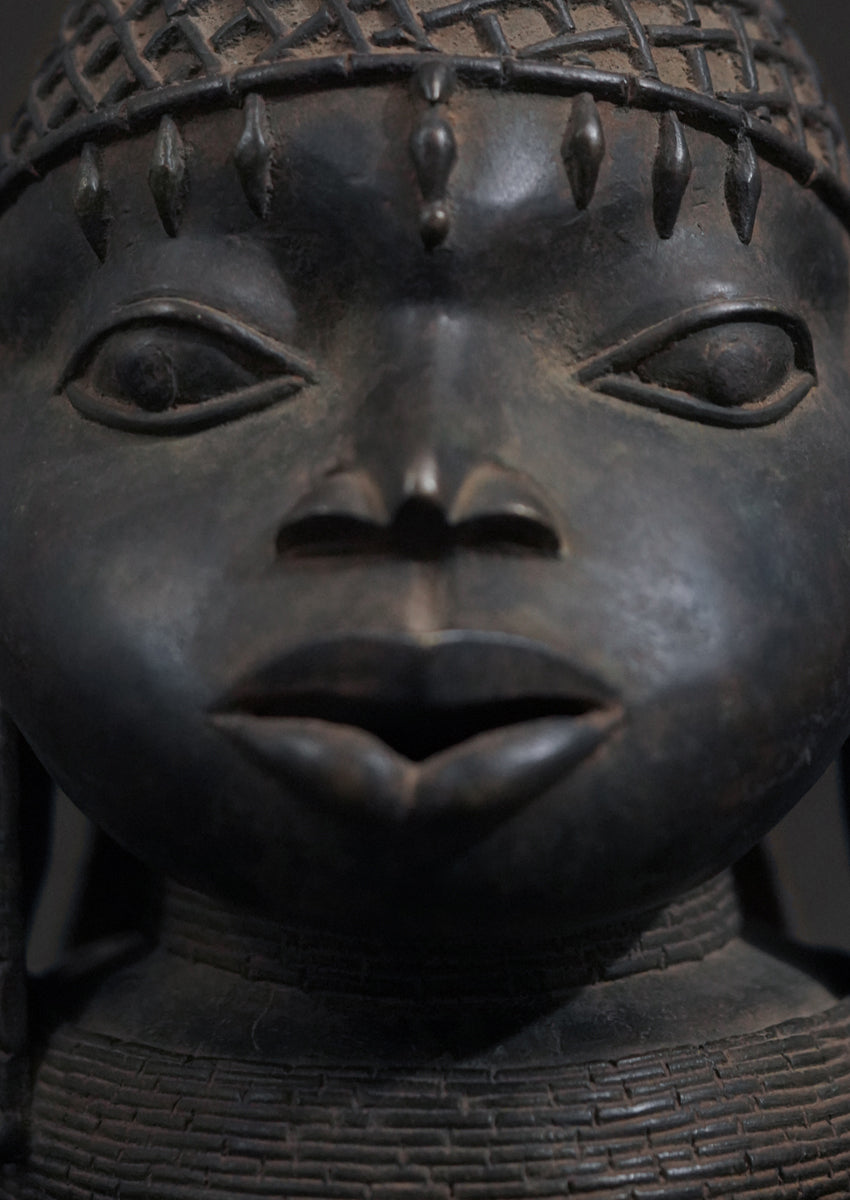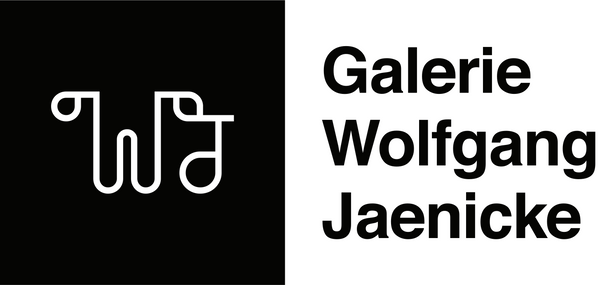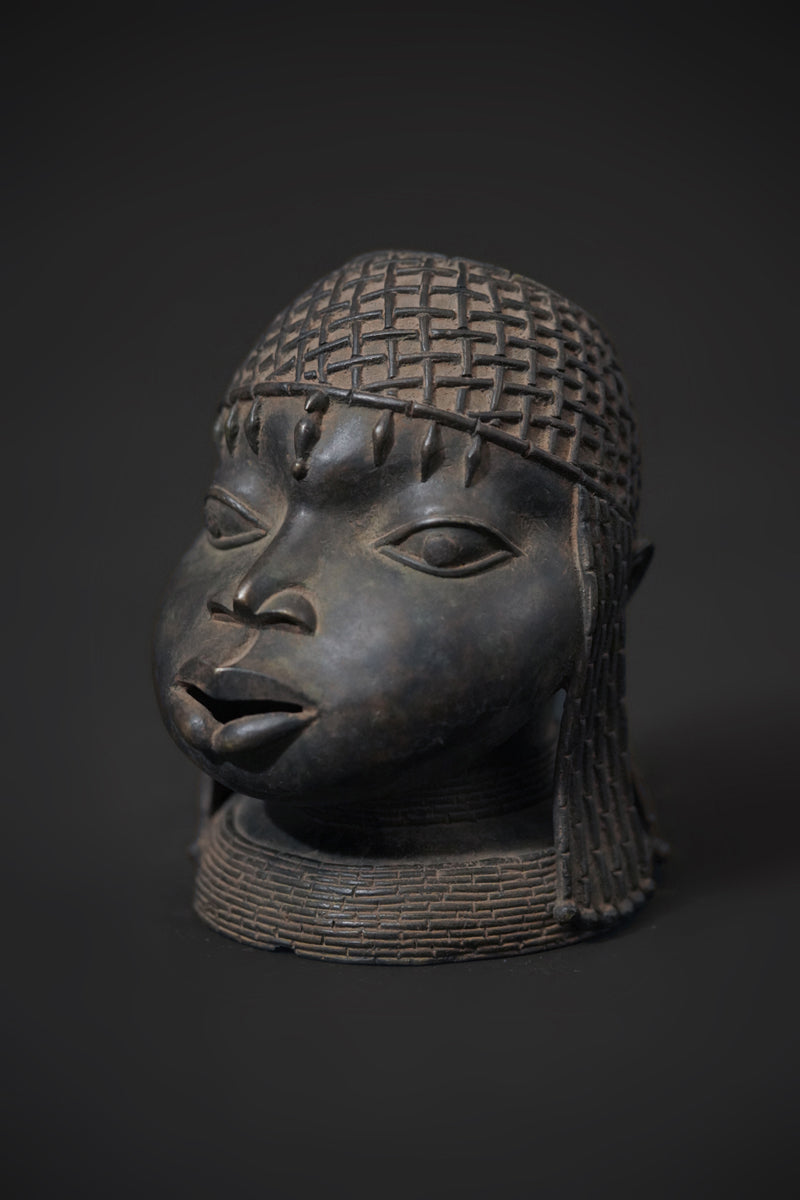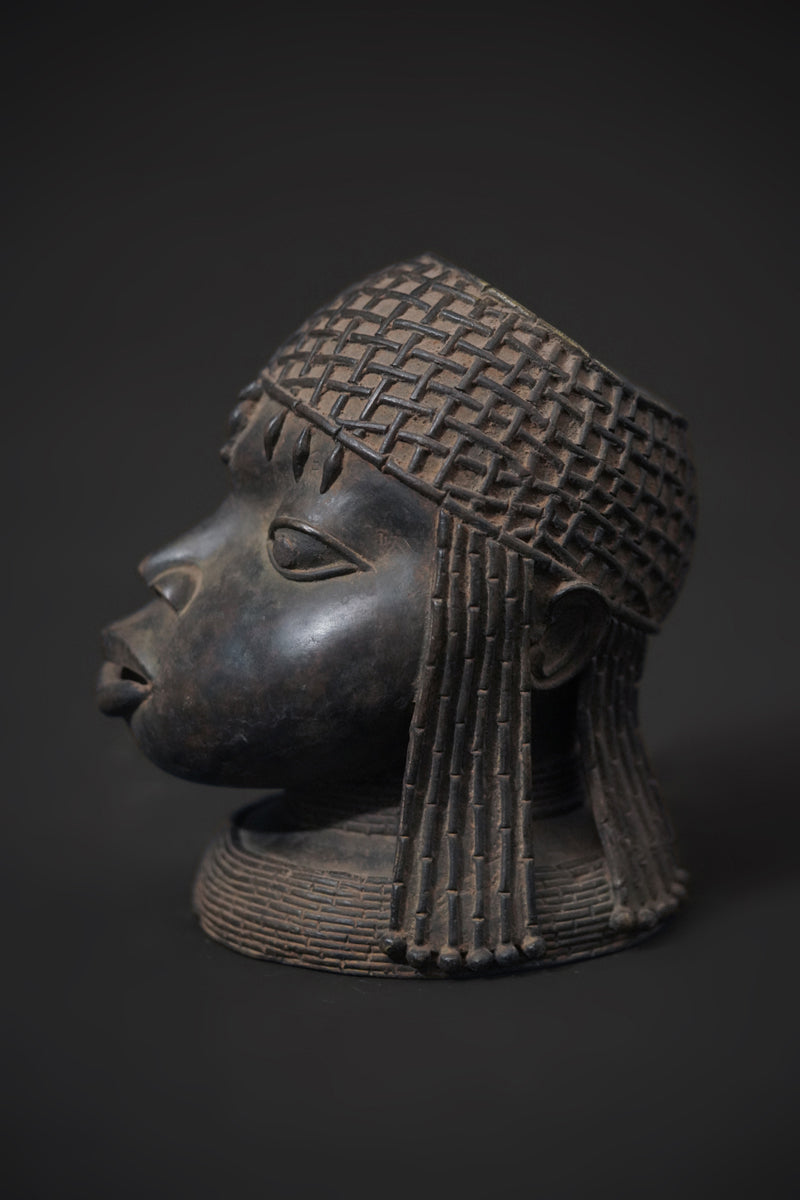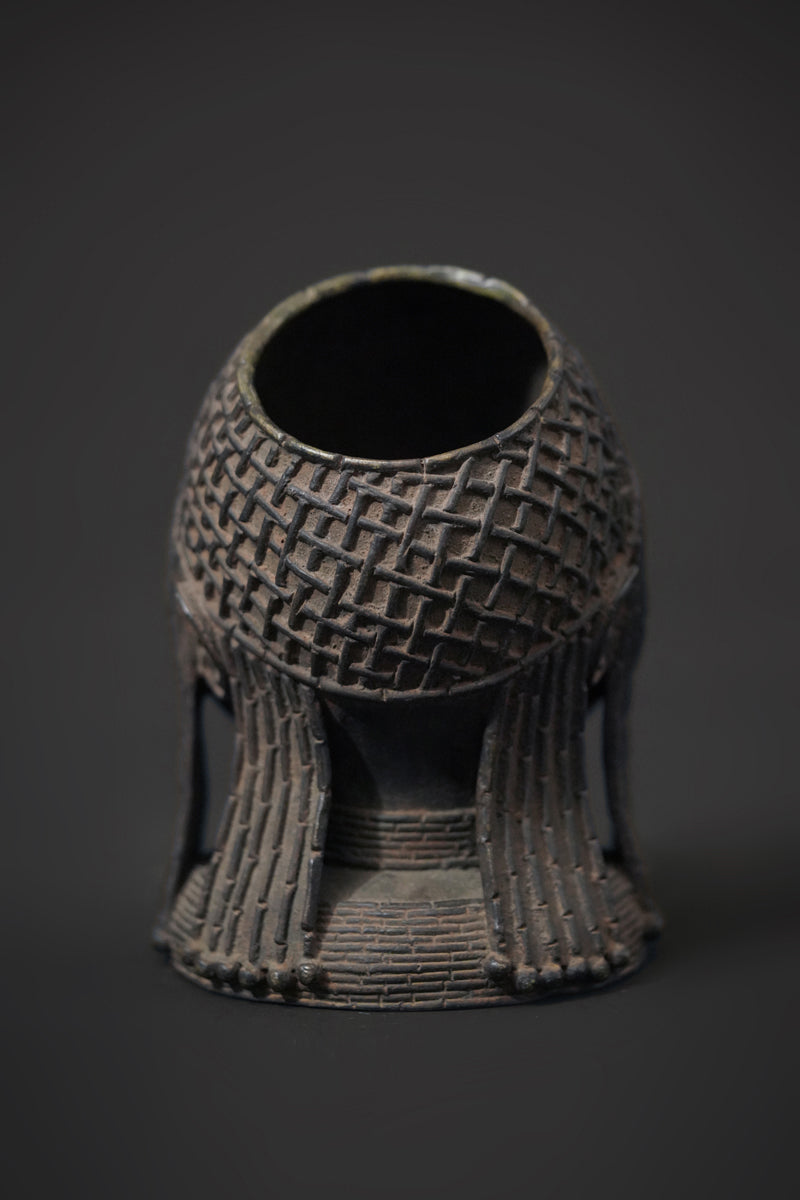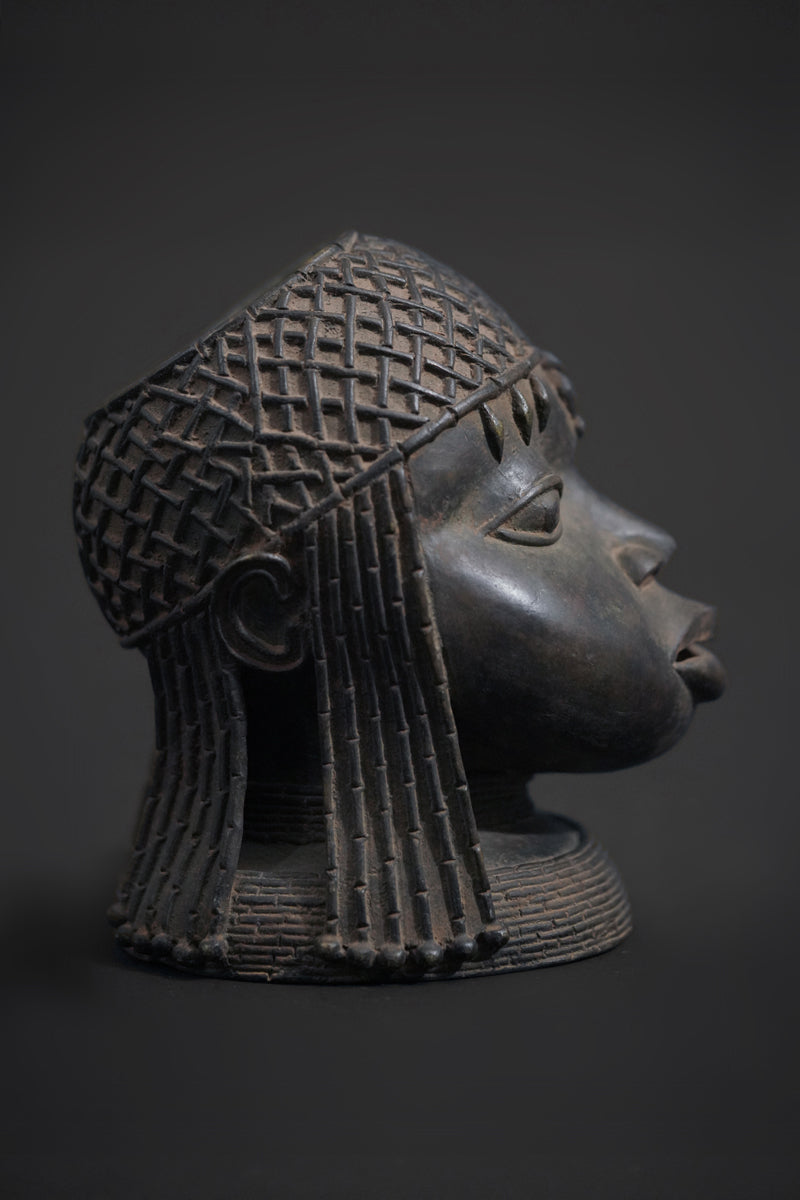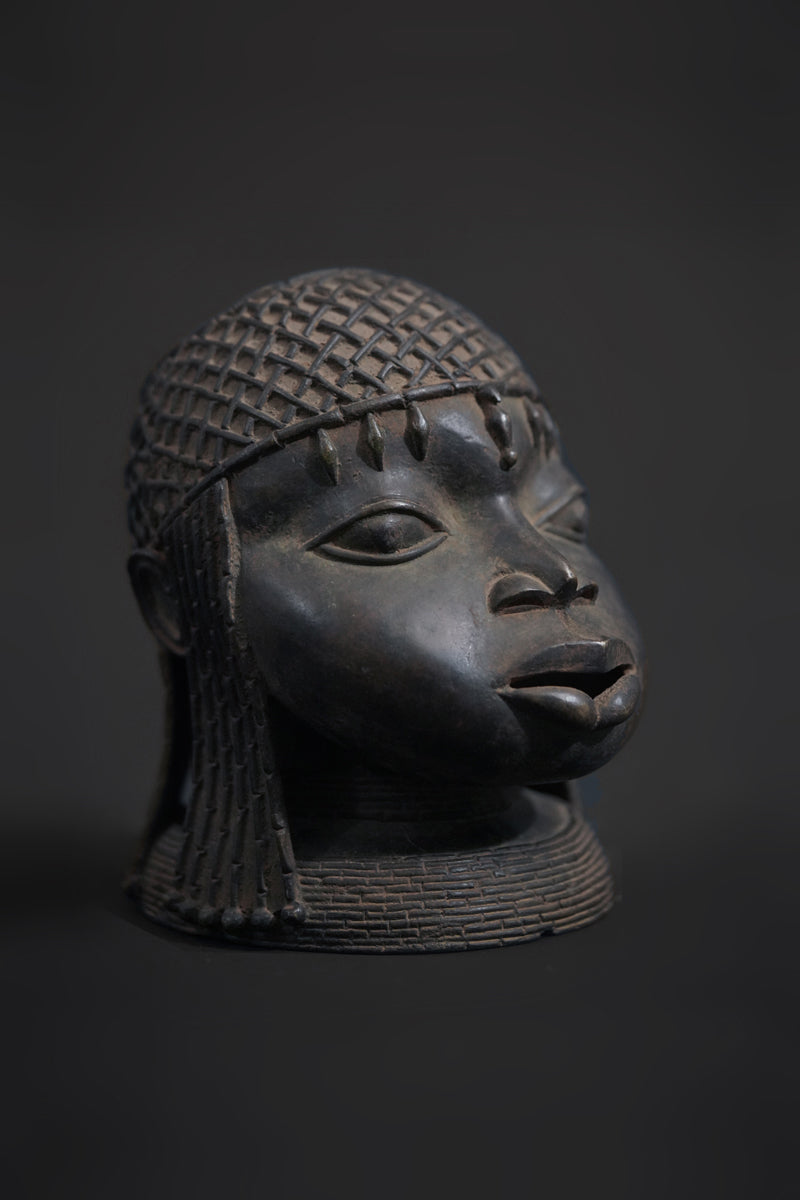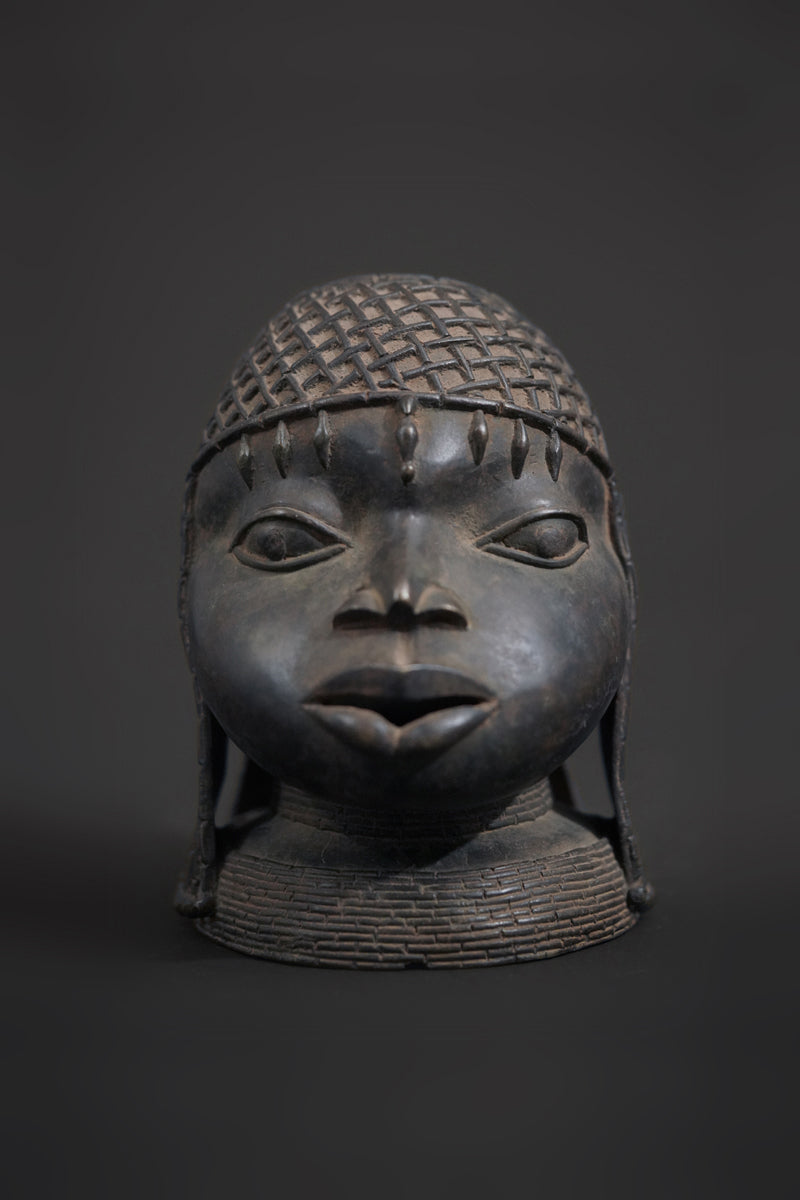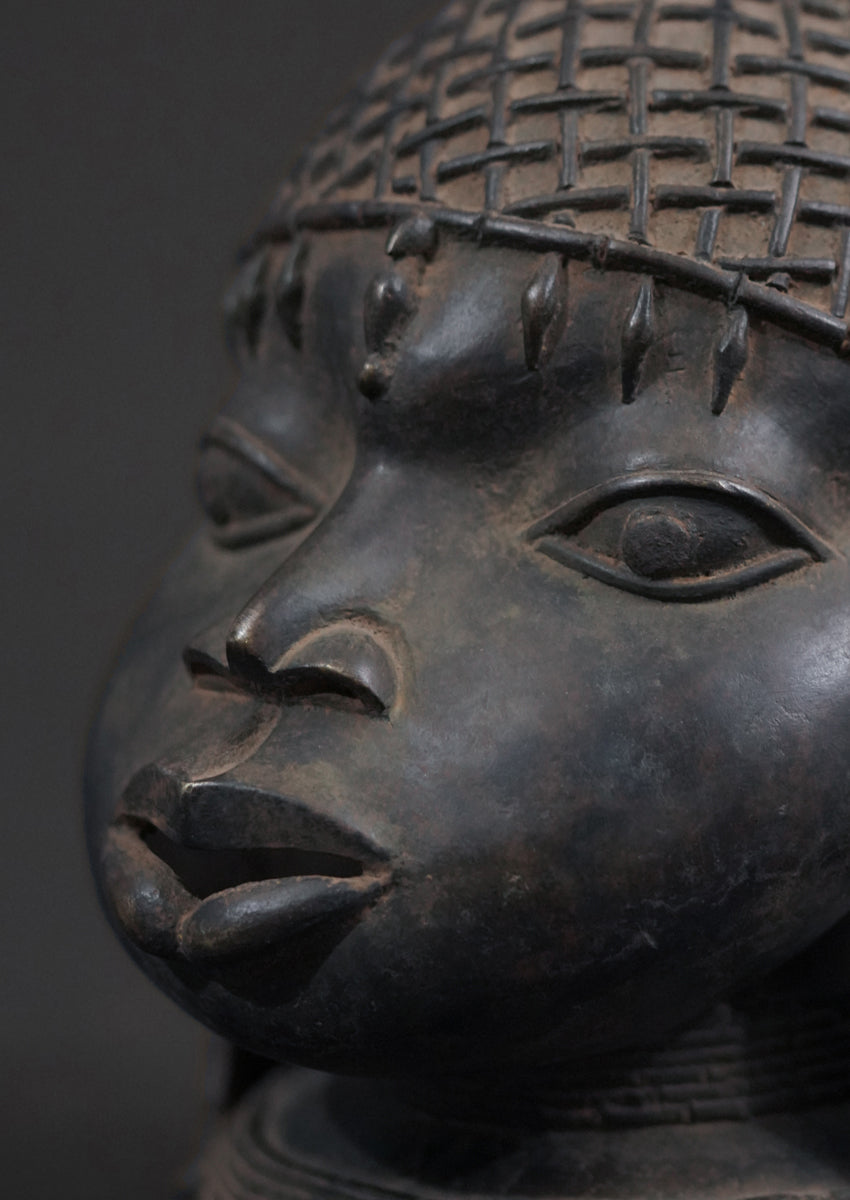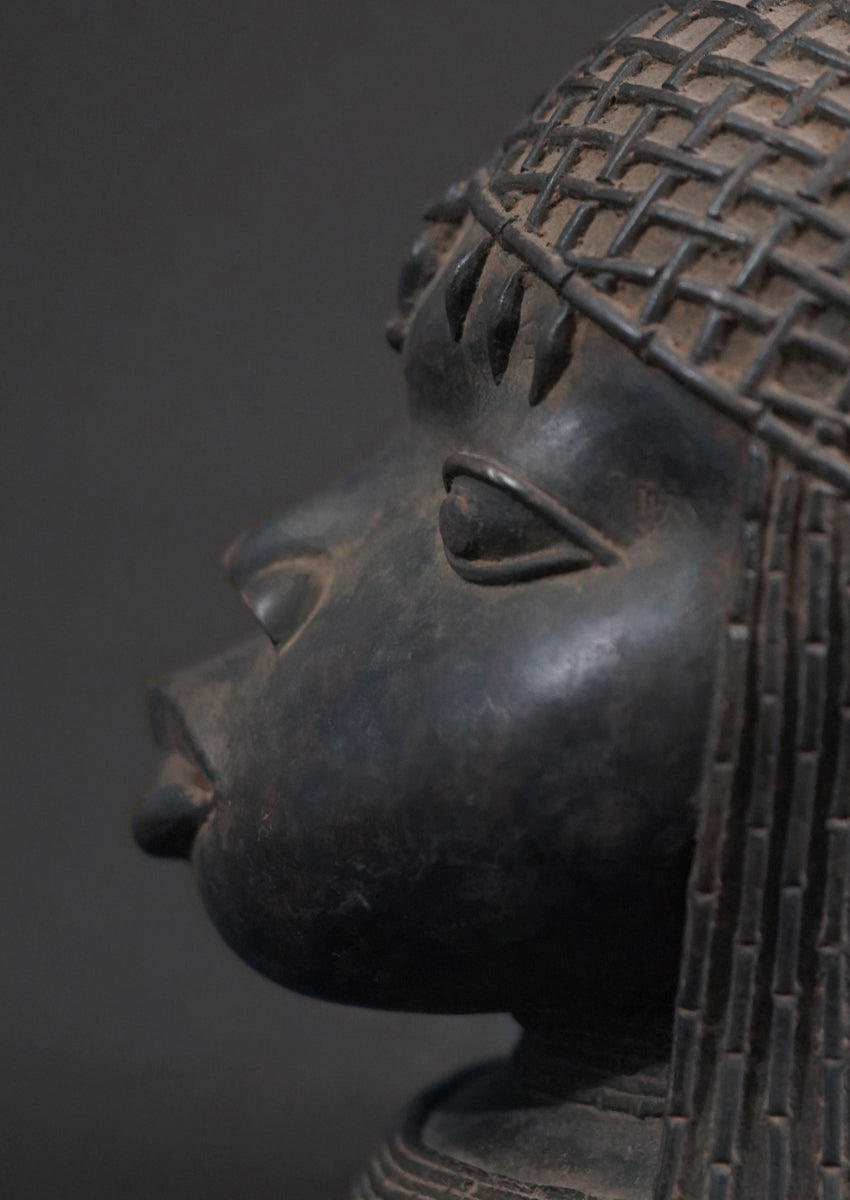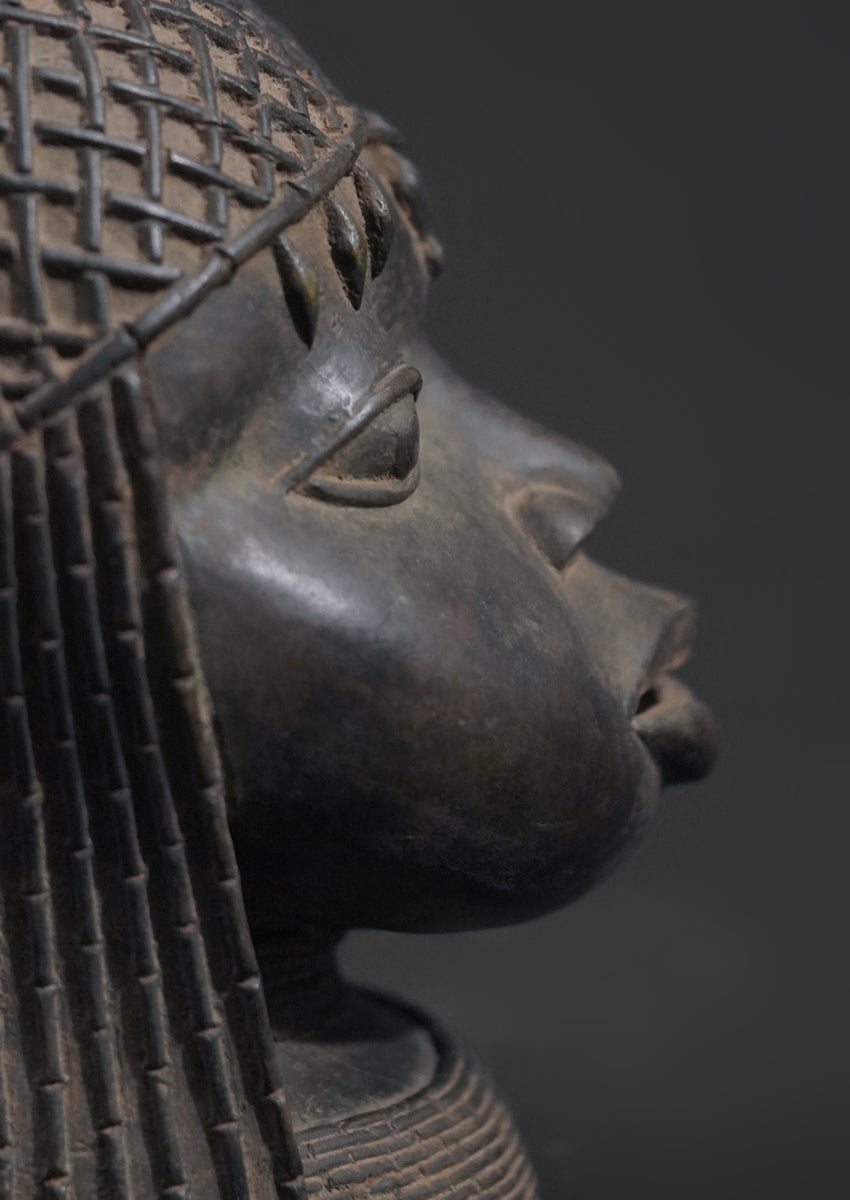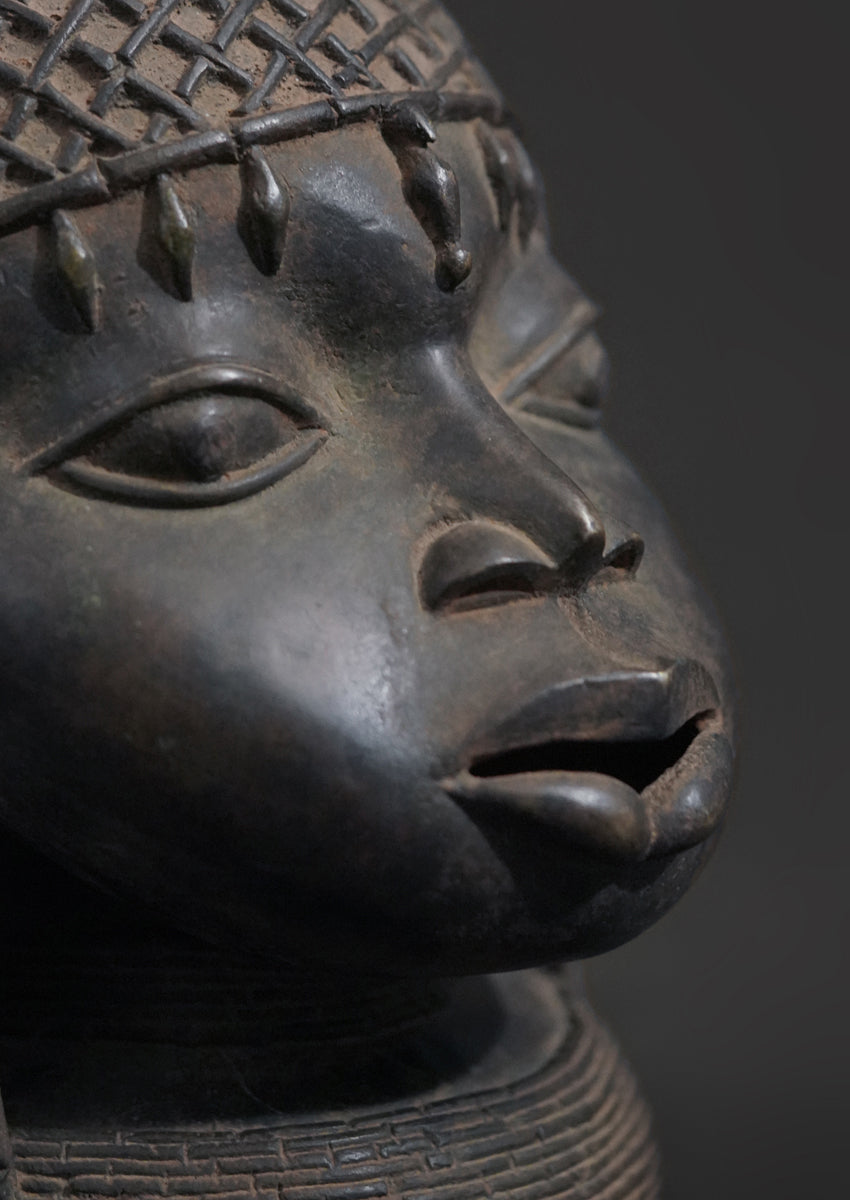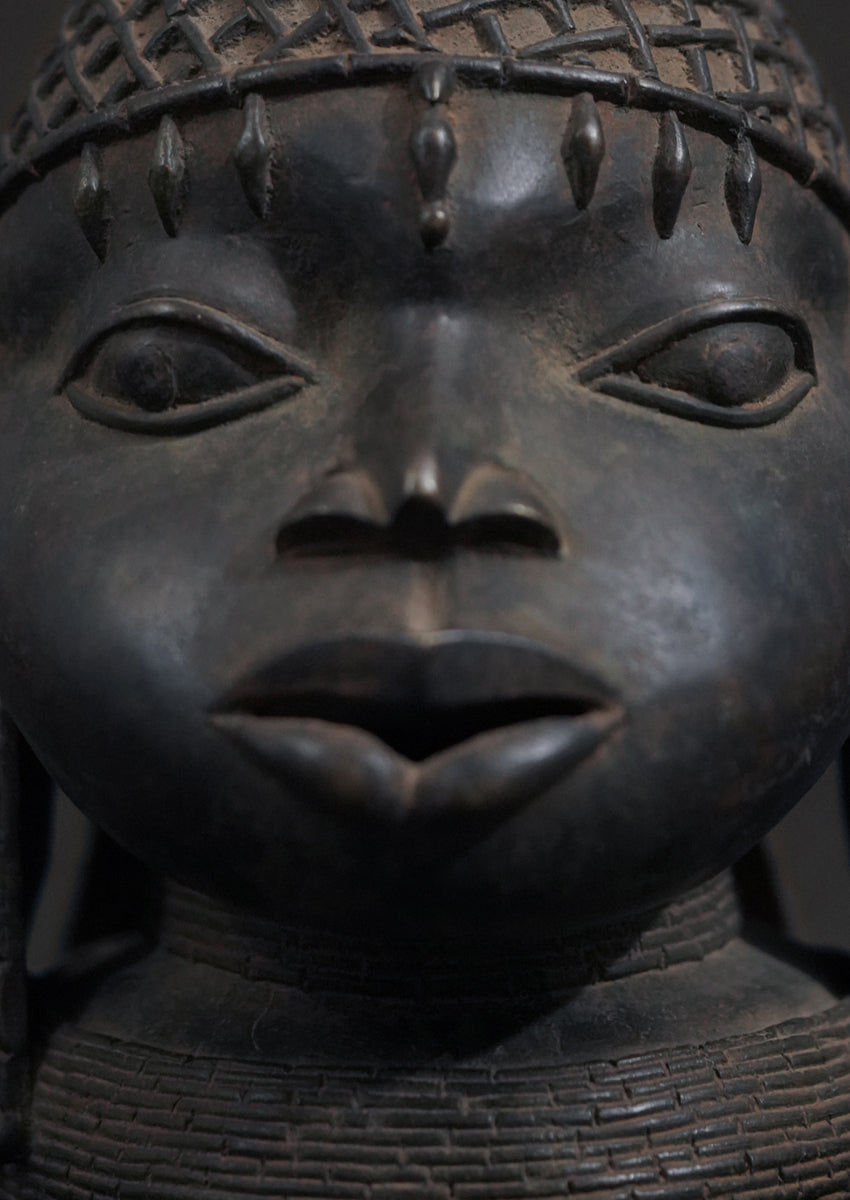wolfgang-jaenicke
A male or female Benin Bronze head
A male or female Benin Bronze head
Couldn't load pickup availability
...with cast seams on the inside as was customary with old, traditionally made Benin bronzes. Originally only relatively small vessels were used to pour the liquid metal alloys into the casting channels. Due to the rapid cooling of the liquid metal, the repeated filling of the liquid brass alloy resulted in cast seams that have been preserved on the inside of the bronze. Since the 20th century it has been possible to use larger, well-sintered vessels for the liquid metal to be poured into the casting channels in one go. In this way there were no more cast seams. For this reason we can assume that it is an old bronze. Whereby we can only determine an exact age stylistically. The Pitt Rivers bronze head is very similar to that of the bronze here. This bronze is known to have been made at least before 1897 (the punitive expedition against the Kingdom of Benin). The age of the bronze head in the MET is based on metallurgical investigations, the verification of which is controversial. Here, too, it is primarily stylistic studies that have led to a presumed age assignment. The same applies to the bronze head in the Humboldtforum Berlin, which is now the subject of restitution because it also comes from the British raid of 1897. Unlike Benin bronzes, which were buried and show a heavily encrusted and oxidized patina, this head has probably stood on an altar until recently and shows a "living" metal patina with little wear. On the outside, in contrast to the inside, there is only slight oxidation on the iron eye inlays, which indicates a well-groomed condition, because these heads were often "greased" to underline their shine.....
The leaders of the kingdom of Benin in present-day Nigeria trace their origins to a ruling dynasty that began in the fourteenth century. The title of "oba," or king, is passed on to the firstborn son of each successive king of Benin at the time of his death. The first obligation of each new king during this transition of rule is to commemorate his father with a portrait cast in bronze and placed on an altar at the palace. The altar constitutes an important site of palace ritual and is understood to be a means of incorporating the ongoing influence of past kings in the affairs of their descendents.
Though associated with individuals, this highly stylized genre of commemorative portraiture emphasized the trappings and regalia of kingship rather than specific facial features. In the Edo world view, the head is considered the locus of aman's knowledge, authority, success, and family leadership. The burden of providing for his family and seeing them through times of trouble is often described as being "on his head." The oba is often called by his praise name "Great Head," accentuating the head of the living leader as the locus of responsibility over and for the Benin kingdom.
The idealized naturalism of this work reflects conventions of depicting the king at the prime of his life. The straightforward gazing eyes, which would have included iron inlays, possess the ability to see into the other world, communicating the divine power of the oba to survey his kingdom. The beaded headdress and collar are depictions of the king's coral regalia. Coral is of particular importance to the Edo because of its associations with the ancestral realms of the sea and to the immense wealth of the oba gained through ocean-going trade with Europe.
The relatively minimal amount of brass used to make this light cast and the proportionately small amount of regalia depicted indicate that the head was created during the earlier half of the sixteenth century. Art historians have suggested that over the centuries, as greater quantities of brass became available, casters had less incentive to be economical with the material, and the trappings of office worn by the kings of Benin became more ostentatious.
The Michael C. Rockefeller Memorial Collection, Bequest of Nelson A. Rockefeller, 1979 (1979.206.86). Metropolitan Museum of Art.
Lit.: Philip J. C. Dark, An introduction to Benin art and technology, Oxford 1973. Phillips, T. (ed), Africa. The Art of a Continent, 1999. Paula Girshick Ben-Amos, The art of Benin, 1995. Ekpo Eyo, Frank Willett, Kunstschätze aus Alt-Nigeria, Mainz 1983. Barbara Plankensteiner (Hg.), Benin. Könige und Rituale. Höfische Kunst aus Nigeria, Wien 2007.

The Pii Rivers Head, Rushmore, GB.

Luschan, Die Altertümer Benins, Plate 56.

Luschan, Die Altertümer Benins, Plate 53.
Height: 19,5 cm
Weight: 2 kg
